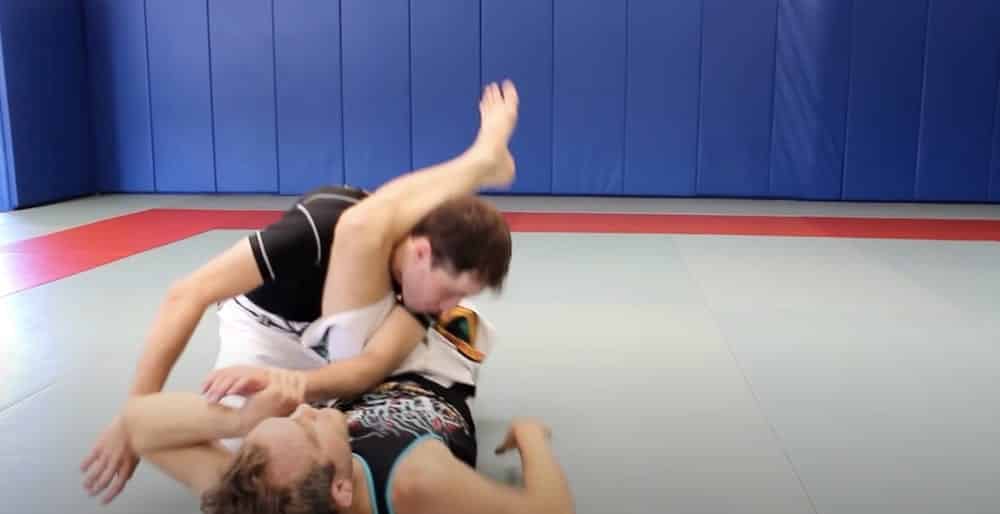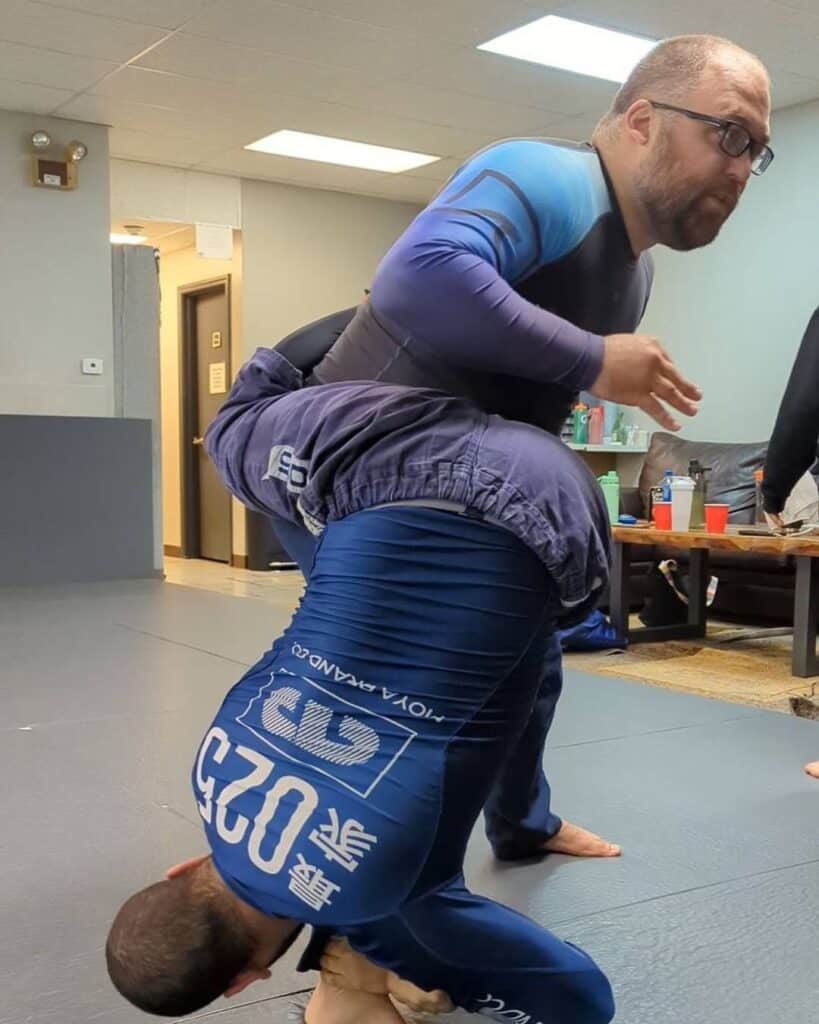Donkey Guard: BJJ Jeff Glover Technique

The donkey guard is something you may have heard of and blew off as a joke technique. Something that is ridiculous and would never work.
Well it is sort of a joke, but the guard is a technique that can work. For those unfamiliar with donkey guard let us tell you a little bit about this guard.
We’re going to go over who came up with it and why they started doing it. Also list the mechanics of the guard along with a few different donkey guard techniques.

Who came up with the donkey guard?
Donkey guard came from the mind of BJJ legend and known jokester Jeff Glover. When Jeff started doing this in competitions nobody knew what to think.
At first they called reverse guard jump and then later dubbed the donkey guard, which stuck. Jeff took the function of the scissor takedown(kani basami), but without the danger of damaging his opponent’s legs.
He may have got some inspiration from professional wrestling to get the crowd into his match. Taunting a stalling opponent by turning his back and essentially giving him his back to start the action.
Since first doing the donkey guard in the 2011 ADCC tournament, Glover has used it sporadically ever since in competition.
How does the donkey guard work
The donkey guard basically breaks all of the rules of Jiu Jitsu and self defense. Literally turning your back to your opponent, then putting your hand on the mat and presenting your backside. Similar to what a donkey does before they back kick you in the face.
When you turn your back on your opponent, you’re basically goating them to engage. Those opponents that can’t keep their composure will jump right into an obvious trap.
Being set up for either a sweep or submission attempt. Making you look like jack@## for falling for this trick.
Questions about the donkey guard
Those who didn’t know what the donkey guard was before reading this may have a few questions about the technique.
Does it work? Maybe. Who knows really. Jeff Glover swears that the technique works and claims to have used it in self defense situations.
Although most of us aren’t Jeff Glover, so who knows. Go drill it and find out.
Is it legal in competitions? Donkey guard falls in a bit of a gray area. Jeff Glover used a donkey guard within the ADCC rule set and a few different pro grappling shows rule sets.
Some tournaments may allow it and some tournaments may disqualify you for doing the donkey guard. Steer clear of doing this in IBJJF tournaments, because you will definitely be disqualified.
Advisory!
Unfortunately, the donkey guard isn’t a widely taught technique or actually by much of anyone really. We searched all of Youtube for technique videos and this is what we found.
Some of the possible techniques from the donkey guard may not have video, so apologies for that.
Donkey Guard sweep
Before we get into the sweep, here is how you get into donkey guard. Start by turning your back on your opponent.
When you break their rule of never turning your back on your opponent, they engage and come forward. As they come forward drop your hand to the mat and kick your legs toward your opponent. You really have to commit and throw your body at your opponent.
Ideally, you should land with your legs around your opponent’s midsection with your legs crossed behind their back.
Now, you’re going to roll under your opponent. Grab the back of their legs to guide you as you roll under them as you push them forward
After you push your opponent forward, they should brace themself by putting their hands on the mat. From here you can control your opponent’s legs, come up, and go to take their back.
It’s highly unorthodox, but it can work.
Donkey Guard sweep #2
There is another sweep option from the donkey guard that is sort of a mix with the Imanari roll. This is the sweep he did at the ADCC 2011.
Start the same, turn your back, drop your hands to the mat, and throw yourself at your opponent.
With your legs hooked around your opponent, you go into your sweep. It has the same finishing sequence as when you do an Imanari roll.
Corkscrew your body around your opponent’s legs, then hooking and tripping them. You end up on top and in a position to pass your opponent’s guard.
Donkey guard heel hook
Since the second sweep detailed above has the similar movement as an Imanari roll, there’s a possible heel hook there.
First like always with this guard, turn your back, put your hands on the mat, and jump into your opponent.
With your legs locked around your opponent. Then do the same motion as the sweep, rolling around them as you hook their leg and they fall down.
When your opponent falls down, they are in perfect position for you to do an inside heel hook. Instead of sitting up, turn into your opponent’s heel, lock your arms around it, and go for the submission.
Donkey Guard kneebar
Another possible submission option off the first sweep above is a knee bar. When you put your legs around your opponent’s back, their legs are in range to be attacked.
You could in theory go for a kneebar instead of sweeping. This time, when you go into donkey guard, do not lock your legs together. Leave them open, so you can rotate your body into one of your opponent’s knees.
Pick a leg you want to attack, hook it, and rotate your legs around your opponent’s to isolate it. You could possibly roll your opponent forward and try to finish with a kneebar. Maybe even a toehold if they defend the kneebar.
Tips
Although the donkey guard isn’t something you’d use regularly it does have elements to it that do work. Here are some tips for doing it.
- Turn Your Back On Your Opponent: Break the first rule of self defense and turn your back on your opponent to coax them into your donkey guard.
- Jump Into Your Opponent: Put your hands on the mat and throw yourself right at your opponent.
- Commit: If you’re going to try donkey, you just have to commit and go for it.






